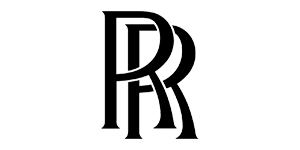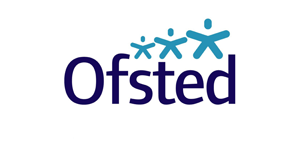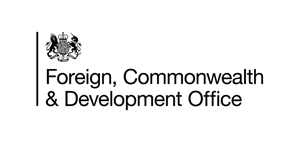Comparing Coaching, Mentoring, Counselling & Therapy

Understanding the Boundaries and Purpose of Developmental Support
This compilation is an educational resource developed by the British School of Coaching. This series is compiled as a foundational resource for coaches in training. Each article introduces a practical coaching tool or model, grounded in theory and supported by real-world application. Whether you’re preparing for ILM coaching qualifications or looking to deepen your understanding of best practice in coaching, this series offers research-informed insights to strengthen your coaching toolkit.
In the landscape of personal and professional development, it’s easy to confuse coaching, mentoring, counselling, and therapy. Each of these support approaches shares some overlapping skills—such as deep listening, powerful questioning, and the ability to hold space for reflection—but they differ in purpose, training, boundaries, and intended outcomes.
For coaches in training, especially those working within organisations, schools, or independent practice, it is critical to understand these distinctions. Clarity ensures that the right support is offered and ethical boundaries are maintained.
Key Differences at a Glance
| Coaching | Mentoring | Counselling | Therapy | |
|---|---|---|---|---|
| Purpose | Personal or professional growth, performance, and self-awareness | Long-term career development through guidance from a more experienced person | Support with personal difficulties affecting current functioning |
Treatment of psychological trauma or mental health conditions |
| Focus | Goal- and solution-oriented; short- to medium-term change |
Skill transfer and career navigation; long-term development |
Emotional challenges (e.g. stress, grief, conflict); short- to medium-term | Deep-rooted issues such as trauma, abuse, addiction, or mental illness |
| Approach | Collaborative, non-directive; coachee leads and owns solutions |
Directive or semi-directive; mentor shares experience and advice |
Exploratory; focuses on emotions and understanding behaviour | Diagnostic and clinical; explores past trauma and mental processes |
| Expertise Required | Process and coaching skills; content expertise not required |
Subject matter or organisational expertise often essential |
Training in emotional/psychological wellbeing | Clinical or psychotherapeutic qualifications and licensure |
| Boundaries | Performance-related, present/future-focused |
Informal, may evolve into friendship |
Emotional wellbeing, defined boundaries | Clinical and therapeutic, governed by medical/psychological codes |
| Examples | Executive coaching, leadership coaching, skills coaching |
Mentoring new teachers, junior staff, aspiring leaders |
Workplace counselling for stress or grief | Therapy for PTSD, anxiety, addiction |
Shared Techniques, Different Intentions
All four approaches rely on interpersonal communication—listening, empathy, inquiry—but their goals and methods differ. For example:
- Coaches help clients move forward through insight and accountability. They do not analyse the past unless it’s in service of future action.
- Mentors offer advice based on lived experience. Their value lies in sharing insider knowledge and opening doors.
- Counsellors provide a safe space to process emotions and navigate life stressors.
- Therapists work with deeper psychological distress, often with clinical methods.
Understanding this difference protects both the client and the practitioner. A coach attempting to “counsel” without appropriate training risks causing harm.
The Role of the Coach
A coach:
- Encourages self-discovery and ownership
- Focuses on the present and future
- Helps clients set and achieve meaningful goals
- Challenges unhelpful thinking or behavioural patterns
- Refers onward when coaching boundaries are exceeded (e.g. mental health issues)
Coaches do not diagnose, do not treat emotional trauma, and do not advise in the way a mentor or counsellor might.
When to Refer
A coach should refer a client to counselling or therapy when:
- The client consistently talks about unresolved trauma, abuse, or emotional distress
- Mental health symptoms (e.g. anxiety, depression, suicidal thoughts) dominate sessions
- The client becomes emotionally dependent or is unable to engage in action planning
Clear contracting at the outset of the coaching relationship—and awareness of appropriate referral pathways—helps manage expectations and uphold ethical practice.
In Conclusion
While coaching, mentoring, counselling, and therapy may all support a person’s development, each serves a distinct role. As a coach, staying clear on the boundaries and intent of your practice not only protects your clients—it enhances your professionalism, impact, and integrity.
References:
- Clutterbuck, D. (2004). Everyone Needs a Mentor. CIPD Publishing.
- Cox, E., Bachkirova, T., & Clutterbuck, D. (2018). The Complete Handbook of Coaching. 3rd ed. Sage.
- Grant, A.M., & Cavanagh, M.J. (2007). The goal-focused coaching model as a foundation for evidence-based coaching practice. Coaching: An International Journal of Theory, Research and Practice, 1(2), 146–155.
- International Coaching Federation (2021). Code of Ethics. https://coachingfederation.org/ethics
- Starr, J. (2021). The Coaching Manual. 5th ed. Pearson.
- Whitmore, J. (2017). Coaching for Performance. 5th ed. Nicholas Brealey Publishing.






